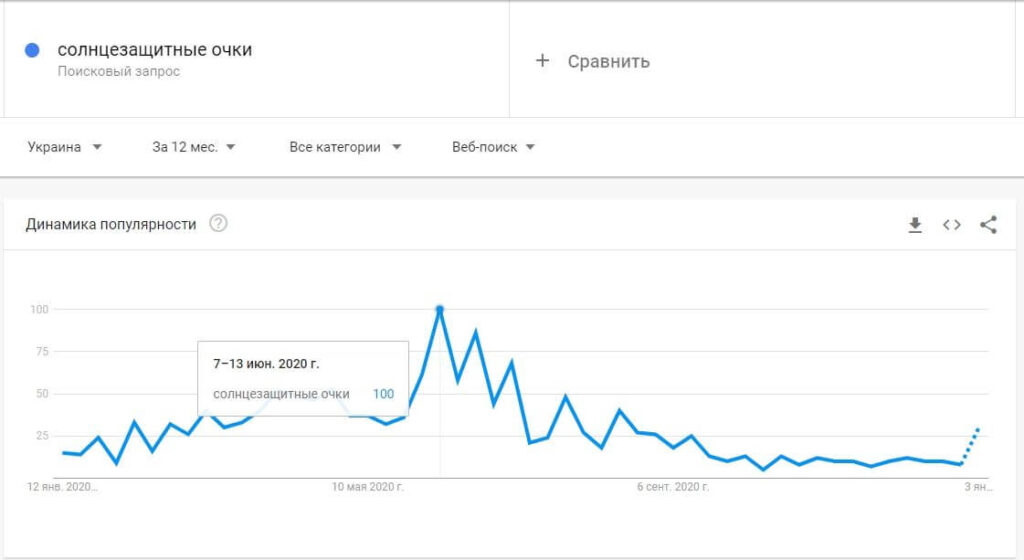Don't miss interesting news

Almost any business faces the phenomenon of seasonality. In some periods, the need for products decreases, which leads to a “low season”. When there is an increase in customer interest, we talk about the “high season”. In the field of online marketing, it is important to take into account that during the peak of demand, competition increases, which leads to an increase in the cost of advertising clicks.
In some cases, it is easy to predict changes in demand: the summer season brings popularity to beach products, and the winter season brings popularity to products for active winter recreation. Flower shop owners face an influx of customers on the eve of September 1, March 8, and Valentine’s Day.
There are also less obvious areas that are not tied to specific holidays or seasons, such as massage services, legal assistance, and the sale of dishes or textiles. However, even here we can identify the timeframe for increasing or decreasing consumer interest.
In this article, we will help you prepare for fluctuations in demand in your industry and give you tips on how to effectively use contextual advertising to increase sales during both growth and decline in customer activity.
When planning advertising strategies, it is important to take into account seasonal changes that can significantly affect contextual advertising. What you should pay attention to:
If seasonal fluctuations in demand in your niche are not so obvious, you can identify peaks and troughs in activity using the following services:
For a more accurate analysis of seasonality in Google Ads, you will need historical information grouped by month for several years.
Example: if we consider requests for sunglasses, the graph will show an increase in interest in the summer. And for an online bicycle store, there is an increase in traffic in the spring, a decline in the fall, and the least interest is in the winter months.

Seasonal fluctuations can be influenced by external factors. For example, changes in demand can be caused by social and cultural shifts, or the emergence of new players in the market. A striking example is the 2020 pandemic and the introduction of quarantine measures. These events have changed established trends.
Before the pandemic, the demand for home exercise equipment was normal:
However, in the spring of 2020, interest in sports equipment only increased, despite the favorable weather.
Dropping traffic due to seasonal changes is an unpleasant situation, but with the right approach, it opens up new opportunities for the development of marketing strategies.
Good to know: the contextual media network is mainly used to increase brand awareness. However, it can be turned into a source of high-quality commercial traffic even during seasonal downturns.
Adapting contextual advertising to seasonal changes allows you to find original ways to promote your product and attract new customers with lucrative offers. It is important to create updated ads for CCM and use this tool when demand drops.
A frequently discussed issue is choosing the best time to promote seasonal products, such as skates or swimwear. The choice depends on the specifics of your industry. For example, even in summer, some people are looking for information about winter jackets. However, this does not mean that the demand for them is the same in summer and winter. Many such queries are not purely commercial.
Even if a user searches using the phrase “buy”, they can only select options. However, there are those who are actually planning a purchase, especially if there is a big discount. Therefore, two questions arise:
If your online store sells both summer and winter products, and in summer you don’t offer discounts on winter products, focusing on seasonal goods, winter advertising will not be effective. Customers will not buy a winter jacket in the summer for its full price.
If your brand specializes in luxury clothing, prices for this audience may remain too high even with discounts, and conversions will still be low.
How to solve the problem: It is important to understand what queries are active during the low season and why customers are looking for information. If their search has a commercial component, you need to find out what conditions are necessary for conversion. If your offers can meet these requirements, you can continue the campaign with the following adjustments:
For example, you can adjust the headlines of jacket ads by adding information about discounts on previous collections.
For successful e-commerce, seasonal promotions should be planned at least three months in advance, which gives the following benefits:
This approach works for all product groups.
Seasonal advertising on Google Ads is also useful for reminding you of holiday events that encourage you to buy gifts. For example, campaigns on the Google Ads display network can draw consumers’ attention to your products even before they have a direct need for them.